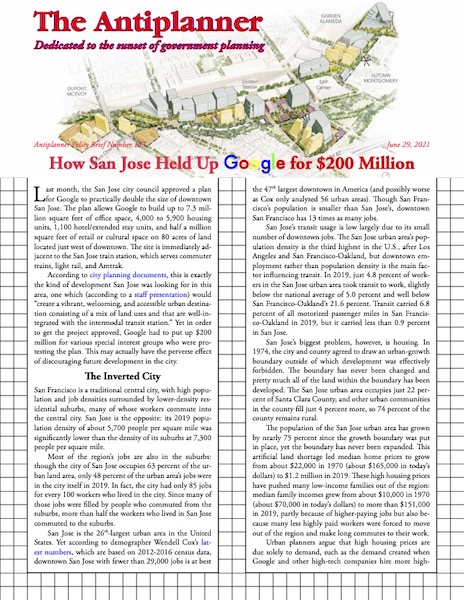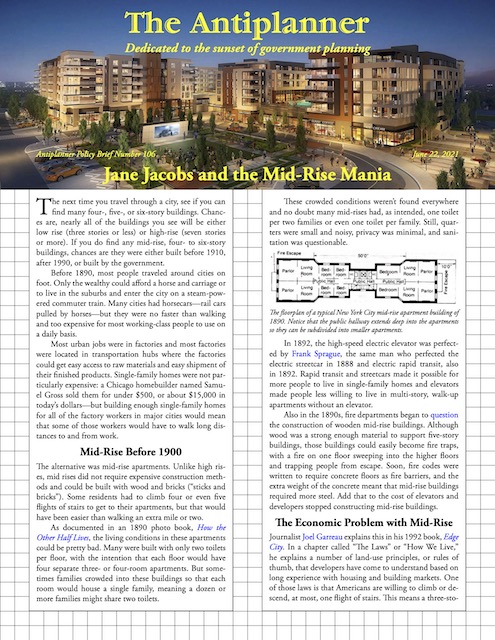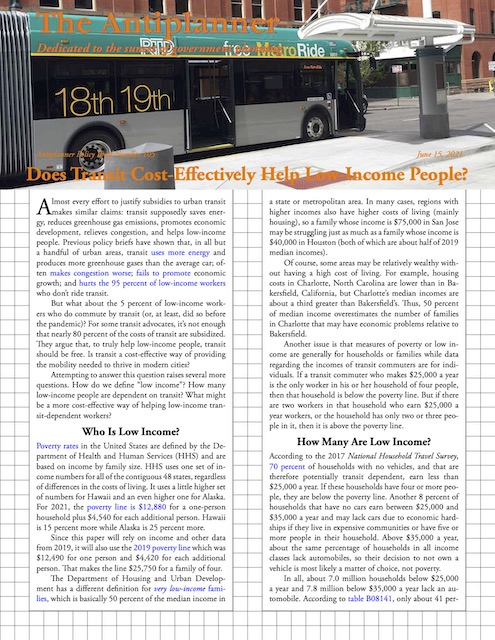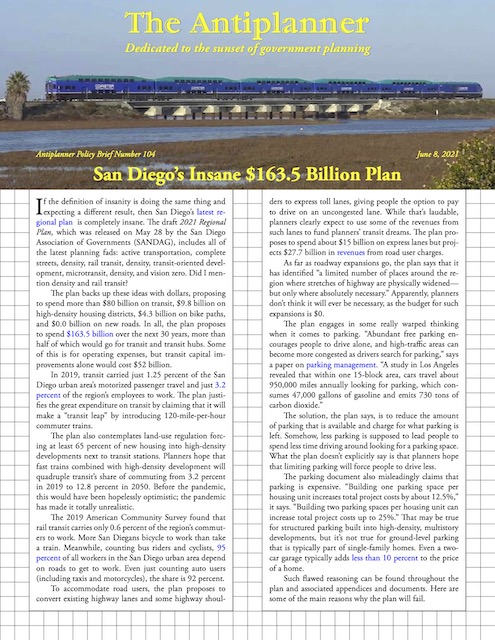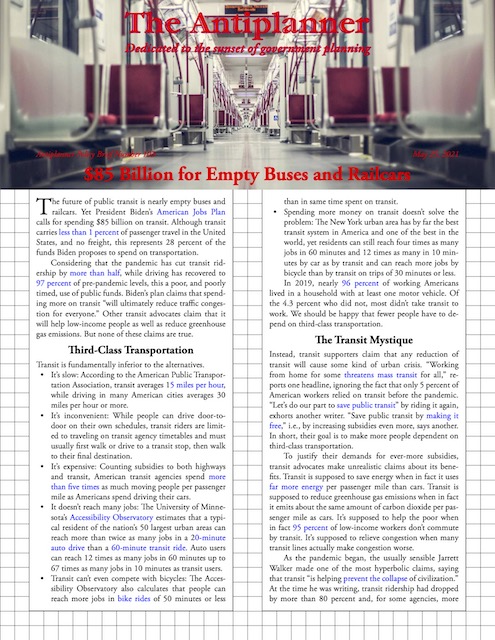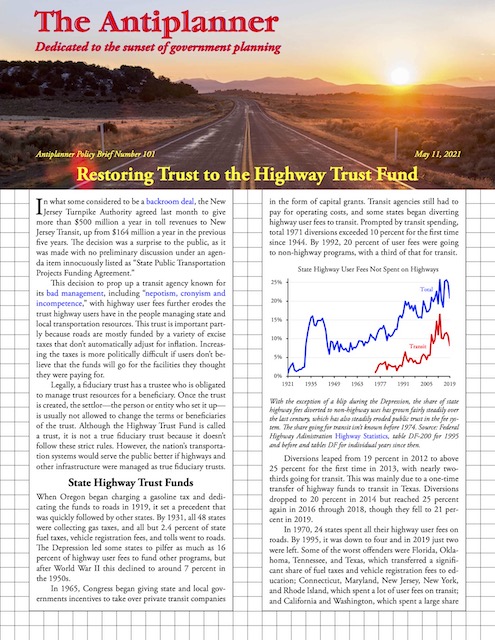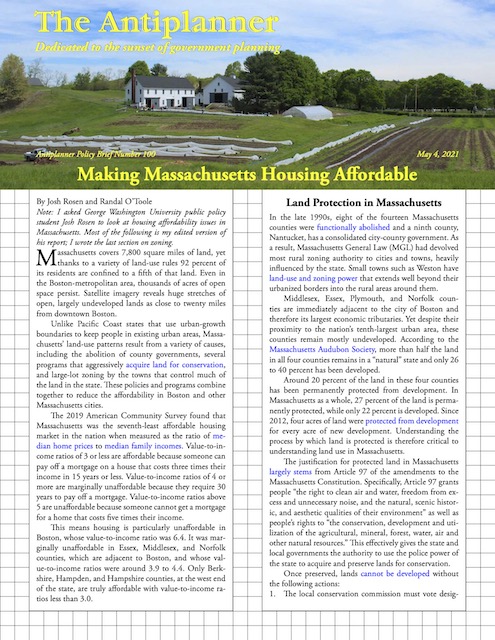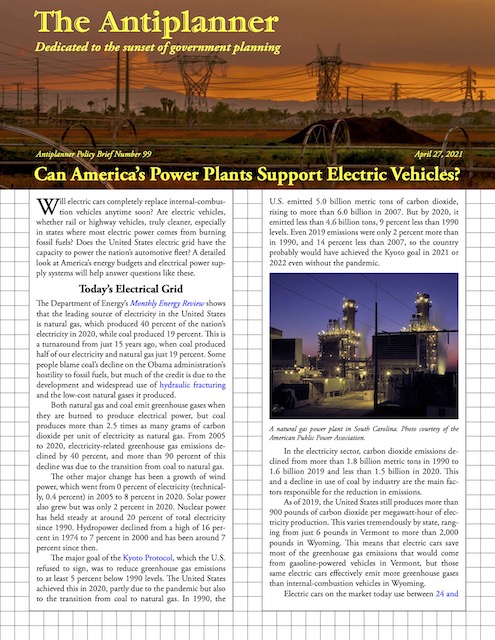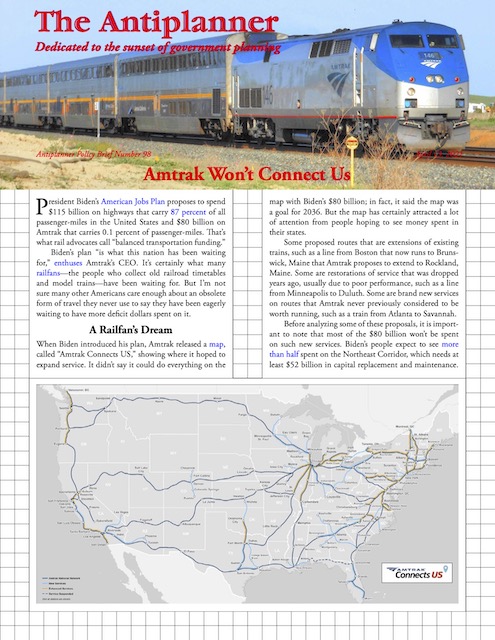An article in Human Progress—a project of the Cato Institute—finds that, when interest rates are taken into account, housing is actually more affordable today than it was 40 years ago. A standard measure of housing affordability divides median home prices by median family incomes. At any given point in time, areas with lower price-to-income ratios are more affordable.
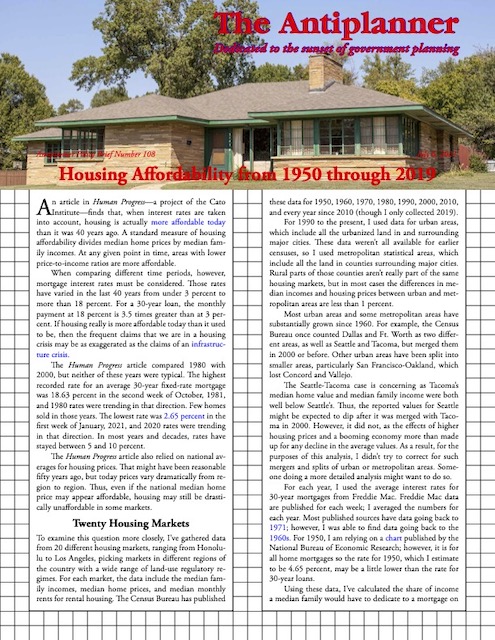 Click image to download a four-page PDF of this policy brief.
Click image to download a four-page PDF of this policy brief.
When comparing different time periods, however, mortgage interest rates must be considered. Those rates have varied in the last 40 years from under 3 percent to more than 18 percent. For a 30-year loan, the monthly payment at 18 percent is 3.5 times greater than at 3 percent. If housing really is more affordable today than it used to be, then the frequent claims that we are in a housing crisis may be as exaggerated as the claims of an infrastructure crisis. Continue reading

